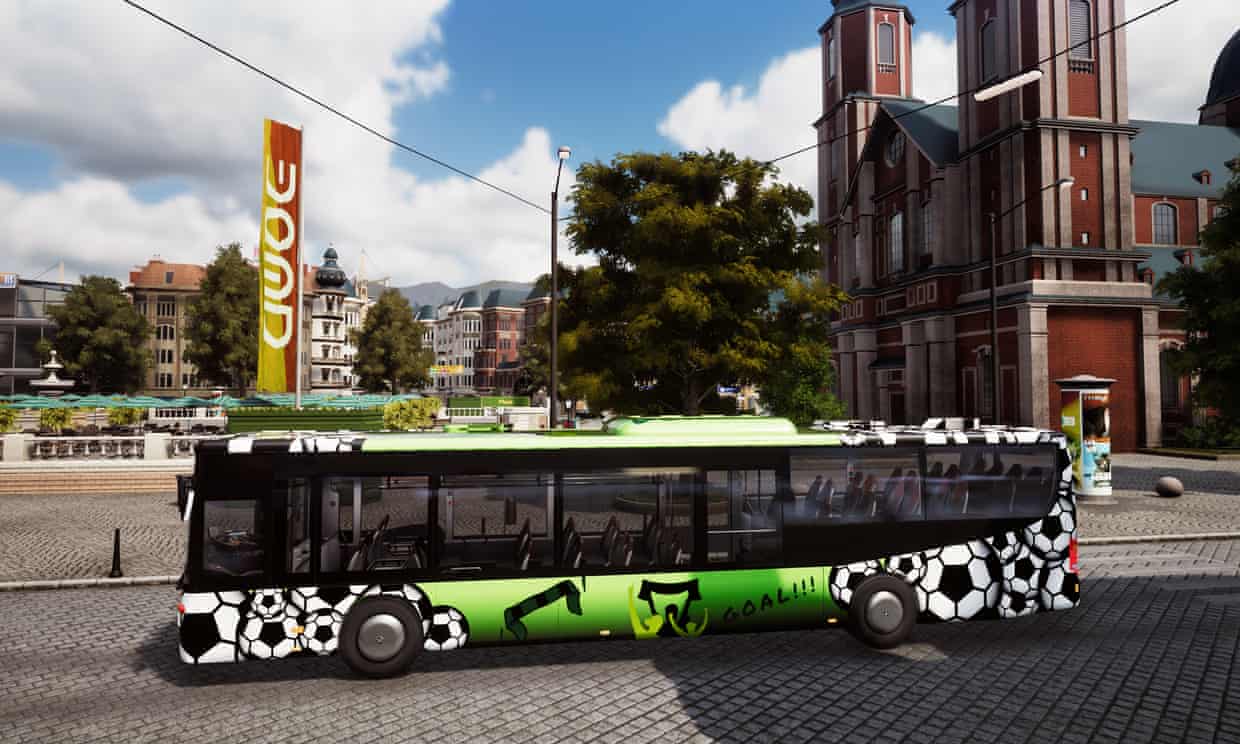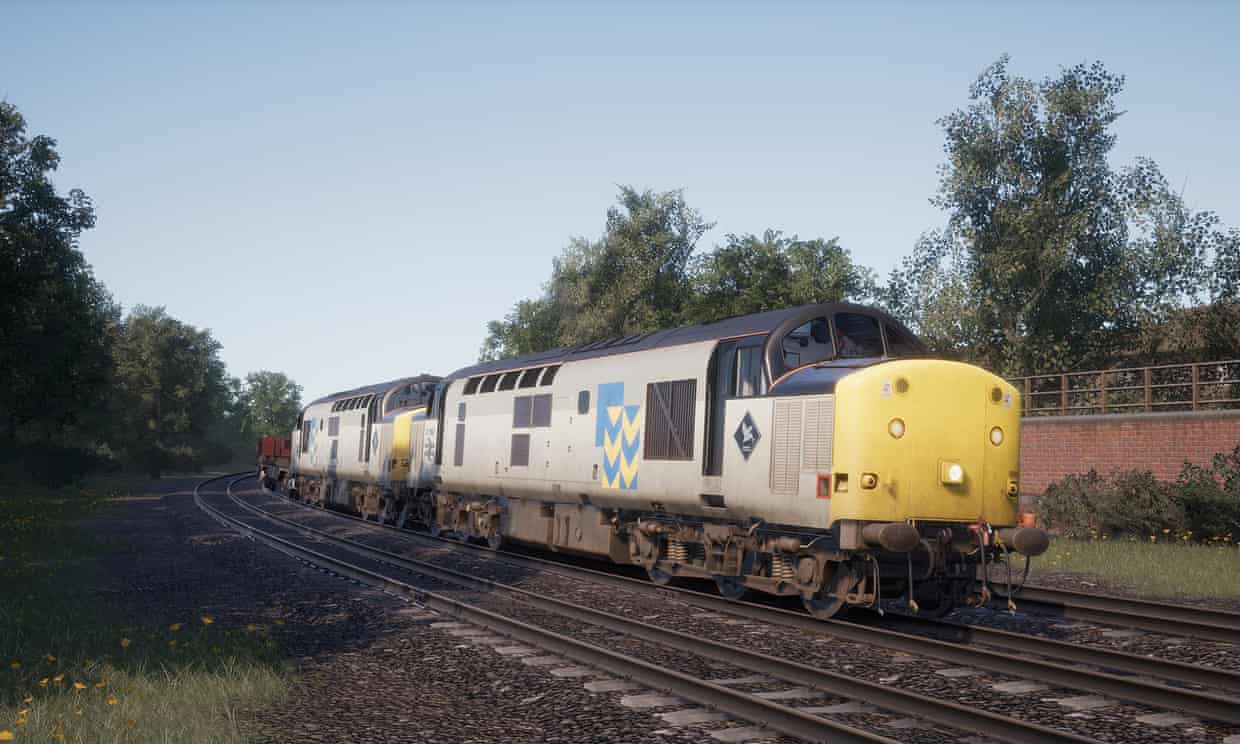
Games
'Transcendentally boring': the joy of job simulation games
From farming to trucking to bus driving, why do millions play games that replicate regular jobs in forensic detail?
by Keith StuartThere is no escape for me this time. The rear axle of my pick-up truck is wedged on a boulder protruding from the mud in the middle of a deserted backwater road in Michigan. I’ve tried to attach a winch to a nearby tree to pull myself out, but it’s not working. I will have to abandon the vehicle, fit up another and try again. This load of timber is not going to deliver itself.
I am playing Snowrunner, the latest in a series of painstakingly authentic offroad delivery simulator games in which players have to haul goods through a variety of unforgiving landscapes at speeds that would shame a garden snail. Before each trip you have to select exactly the right vehicle for the job, fit the correct tyres and work out your likely fuel consumption to the nearest millilitre. On the frozen roads of northern Alaska, there is no room for shoddy planning.
Over the last five years there has been a renaissance in serious job simulator games. Titles such as Euro Truck Simulator, Bus Simulator and Train Sim World have attracted huge fanbases and critical acclaim, each replicating its profession with unremitting attention to detail. In an entertainment sector where ludicrous power fantasies rule, where players get to be space marines, ancient warrior princesses and football superstars, it seems antithetical that 25 million people have bought Farming Simulator, a game in which your main challenge is to harvest a successful wheat crop.

But it is the very precision of these games that has attracted such a devoted following. “Throughout development we gather a lot of questions,” says Julian Mautner at Stillalive studios, the team behind the Bus Simulator games. “When you turn the ignition key once, which functions of the bus actually work, and which icons on the dashboard light up? What happens afterwards when you turn it into second position? These are the details our players really care about.”
According to Mautner, the studio has a partnership with its local transport company, IVB (Innsbrucker Verkehrsbetriebe), which they regularly visit to inspect real-life buses and take hundreds of pictures. “We also talk to the bus drivers about their everyday challenges, about special situations or tricky manoeuvres they had to execute,” he says. “That provides us with immensely valuable insights into the workings of a transportation company.”
Meanwhile, the coders accurately simulate all aspects of engine performance – gear changing, torque, acceleration – using information from manufacturers. The audio team makes more than 1,000 recordings of sounds from all around different buses. The artists recreate interiors exactly. As Mautner explains: “Nowadays we aim to get actual 3D data for the cockpits, because replicating the details from images and blueprints often led to small inaccuracies that the community noted.”
The landscapes are vitally important, too. With truck and train driving simulators much of the appeal is the scenery that whizzes past as you’re hauling goods from Berlin to Bonne, or driving a Great Western train to Cornwall. “Real-world references are essential for the world creation,” says Ondrej Dufek, a project leader at SCS Software, the creators of Euro Truck Simulator and American Truck Simulator. “Google Earth, Maps and Street View are a vital tools and sources of photo references. On YouTube, there are also videos from truckers who drive across various states and countries, commenting on their surroundings and pointing out interesting stuff. Information about elevation, economy, industries, markets, traffic density, freight routes, weather, even demographics – everything is important and helps us decide what roads and cities to put in our world.”

“Sometimes we’ll take photos straight against a wall so our artists can see what kind of brick is being used,” says Matt Peddlestone, a senior producer at Dovetail Games which makes Train Sim World. “As you go down a route, the supplier of the brick changes because the bricks are being made locally and the colours of the building will change. We want to capture that.”
It’s easy to think of hardcore sim fans as pernickety obsessives, but there is a quiet joy in interacting with these lovingly replicated systems of lights, switches and signals. In an unpredictable world, it is calming to open the doors of a bus at the right time, to give the correct change, to set the heating system correctly, to obey the traffic signs. It is gratifying to see a button, to press it and to know something will happen.
“I play simulators because by their nature they are internally consistent,” says fan Melissa Harper. “If you’re playing a game and you’re in a cockpit, and you can’t press all the buttons, that absolutely slaughters the experience for me. But in Microsoft Flight Simulator, you can press all the buttons, and they all do something. That’s SO satisfying, and then you can learn what they all do.”
Her favourite example is the ultra hardcore Stormworks: Build and Rescue, where you run your own sea rescue service. “It’s the most brutal game I’ve ever played,” she enthuses. “You have to make the whole plane yourself – and all those hundreds of buttons? You have to place them by hand! The developers just toss you into a ridiculously complicated editor and say, ‘Hey, it’s only aircraft propulsion and electrical engineering, how hard could it be? F*** you.’ It is my favourite game.”

All the simulation developers I spoke to know that some of their players are professionals in the field being simulated. The Train Sim World creators are quickly told when a siding has been placed in slightly the wrong position, or if a certain signal outside Stratford never shows a green light, only ever yellow because that’s the way it’s been wired. “Drivers send us tips,” says Dufek. “What truck stops and unique landmarks we should include, which parts of the roads are infamous for their difficulty (steep climbs, mountain passes).”
Beyond all this, simulators have an emotional and nostalgic value. Train Sim World lets players drive historical trains and journeys, which has allowed retired drivers to rediscover routes they once travelled every day. Fishing: Barents Sea Simulator was inspired by the life of co-creator Goran Myrland’s grandfather, a fisherman in 1950s Norway. “He owned a classic boat just like the Follabuen, which is in our game,” says Yasemin Hamurcu, COO at Misc Games. “He spent months with his crew on the rough sea to find the best catch, to earn money and provide for his family. His wife always worried about him, hoping he would come home safely.”
I have friends who drive for hours in Euro Truck Simulator, using the game’s real in-game radio app to pick up local stations. For me, Snowrunner has been almost hypnotic – it’s given me longer to take in the scenery, to get the feel of rural North America. Many players aren’t here for the authenticity of the equipment of the simulation minutiae; they’re here to experience a landscape in their own way, in their own time. A slow and steady escape.